Posted: November 7th, 2013 | 1 Comment »
Saturday 9th November 2013 at 4 PM (start 4:15 PM)
Hosted in partnership with M Literary Salon at the Glamour Bar
(address below)Â
NICOLAS GREVOT on
“Taiwanese Aborigines”
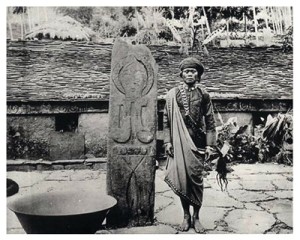
In a lecture that delves into an often-overlooked aspect of Taiwanese history and culture, Nicolas Grevot discusses the hardships faced by the island’s indigenous population in the face of colonial occupation.
Called “Formosa” (Beautiful island) by the Portuguese navigators that sailed by in the 17th century, Taiwan has been inhabited for at least 8,000 years by indigenous peoples known today as Taiwanese aborigines. Grevot will discuss who they are, how they fared throughout the history of the island, interacting with the Dutch colonial power, the Chinese/Han immigration, the Qing dynasty, the Japanese colonial authorities and the Kuomintang administration, and how they are living today in modern Taiwan.
Nicholas will also investigate how the ancestors of the Taiwanese aborigines began a long migration towards the Pacific area 6,000 years ago that gave birth to the Austronesian culture and Austronesian languages that are spoken today by close to 500 million people.
NICOLAS GREVOT: Nicolas Grevot, a French national, arrived in Shanghai in 2008 to follow his Taiwanese executive wife. He has not always been a trailing spouse. Before coming to Shanghai, he stayed for 15 years in Taiwan where he worked as a journalist. There, he fell in love with the island and its peopl![]() e, mostly its indigenous population. During this long stay, he built an important collection of cultural items from the Taiwanese aborigines (close to 300 items) that is now on loan to the Shisanhang Museum of Archeology, in Xin Taipei, Taiwan, and is regularly exhibited in the island. The collection can be seen on this website: www.formosatribal.com
e, mostly its indigenous population. During this long stay, he built an important collection of cultural items from the Taiwanese aborigines (close to 300 items) that is now on loan to the Shisanhang Museum of Archeology, in Xin Taipei, Taiwan, and is regularly exhibited in the island. The collection can be seen on this website: www.formosatribal.com
RSVP to RAS Bookings at: bookings@royalasiaticsociety.org.cn
ENTRANCE: Members: 80 rmb  Guests: 130 rmb  Includes a glass of wine or soft drink. Priority for RAS members.
Â
MEMBERSHIP applications and membership renewals will be available at this event.
Â
RAS MONOGRAPHS – will be available for sale at this event. 100 rmb each (cash sale only)
Â
WEBSITE: www.royalasiaticsociety.org.cn
The Glamour Bar
6/F, No. 5 The Bund (corner of Guangdong Lu)
Shanghai 200002 China
ä¸å›½ä¸Šæµ·å¸‚外滩广东路20å·7楼 邮编 200002
Tel: (86 21) 6350 9988
www.m-restaurant.com
Posted: November 5th, 2013 | No Comments »
Hey, a bunch you emailed me a Chinese lantern reference….not exactly literature but I’ll take it anyway
Bond – Skyfall – Macao…..
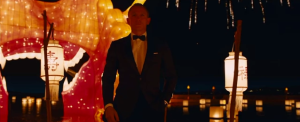
Posted: November 4th, 2013 | No Comments »
How remiss of me when rounding up references to Chinese lanterns in English literature in a previous couple of posts (Maupassant, Isherwood, du Maurier, Lawrence, Chesterton) to have neglected any American writers and their own references to Chinese lanterns. But America did go Chinese lantern crazy too, certainly in the Jazz Age at least….
And thanks for the emails from readers telling me not to forget the Chinese lanterns in F. Scott Fitzgerald’s The Great Gatsby. Â
BUT, they’re not Chinese lanterns, even though people seem to remember them as such. The mysterious man himself out at his mansion on Long Island throwing extravagant parties to lure Daisy Buchanan – Chinese lanterns, and jazz, are the central icons of the parties. However, Fitzgerald only says “colored lanterns”, our imagination appears to have added the Chinoiserie touch rather than Fitzgerald.
Sorry – can’t find a Chinese lantern in any of the filmed versions….
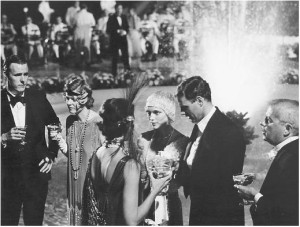
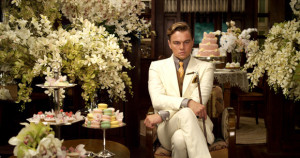
Posted: November 3rd, 2013 | No Comments »
Betty Grebenschikoff on her book
Once My Name Was Sara
Tuesday 5 November 2013, 7 pm
RAS Library at the Sino-British College
1195 Fuxing Zhong Lu
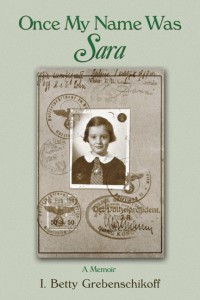
Betty Grebenschikoff has reached into her past to write a moving memoir of her experiences as a Holocaust refugee in Shanghai.
Â
“Once My Name Was Sara” details her family’s flight from Nazi Germany. With wit and humor she describes her early childhood in Berlin and later growing up in Shanghai, the city that became her home. As stateless Jewish refugees, she and her family were interned in the Hongkew ghetto by Japanese authorities during World War II. Illustrating an invincible spirit in the face of overwhelming odds, Grebenschikoff’s memoir is a story of hope and survival.
Â
After leaving Shanghai in 1950, Grebenschikoff lived in Australia before coming to America in 1953. She now makes her home in St. Petersburg, Florida, and Ventnor, New Jersey.
Â
Currently visiting Shanghai, she will speak to RAS members and friends about her memoir, and her years in the city that inspired it.
RSVP: to RAS Bookings at: bookings@royalasiaticsociety.org.cn
 Â
ENTRANCE: 30 rmb (RAS members) and 80 rmb (guests). Includes a glass of wine or soft drink. Priority for RAS members. Those unable to make the donation but wishing to attend may contact us for exemption.
Â
MEMBERSHIP applications and membership renewals will be available at this event.
Â
RAS MONOGRAPHS – Series 1 & 2 will be available for sale at this event. 100 rmb each (cash sale only)
Â
WEBSITE: www.royalasiaticsociety.org.cn
Posted: November 2nd, 2013 | No Comments »
Earlier this year I posted a couple of times on Josephine Baker, the great St. Louis-born dancer who went to Paris in 1925 and became a sensation. I noted that she did use, and seemed to enjoy, some Indo-Chinoiserie motifs and songs as well having previously sung a couple of Broadway Oriental Chinois-style numbers in the hit show Shuffle Along (singing Oriental Blues).
However, it seems though that it just might have been a taste for Chinoiserie that got Josephine to Paris in the first place. According to Judith Mackrell’s new book Flappers: Women of a Dangerous Generation (which, incidentally, has Josephine on the cover) Josephine was first enticed to Paris from America by Caroline Dudley, a well connected American in Paris who thought she would be just perfect for Paris’s 1920s cabarets. Josephine dithered – it was a big step, a major leap into the unknown and away from America. She was working at the Plantation Club in New York, making OK money, building a career. What the hell was France!! One night Caroline Dudley turned up at the Plantation to try and persuade Josephine one last time to take the job in Paris. That night Dudley happened to be wearing a “Chinese style coat, richly embroidered with gold thread.” Baker loved it and asked Dudley if she would give it to her. Dudley seized her chance, handed over the Chinoiserie coat and Josephine agreed to go to Paris!
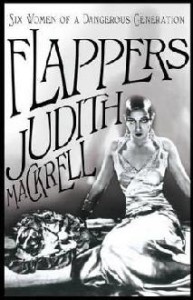 You can get just Josephine’s story as a kindle edition too – here
You can get just Josephine’s story as a kindle edition too – here
Posted: November 1st, 2013 | No Comments »
The Taiwanese edition of Midnight in Peking is out now – many thanks to my excellent translator down in Taipei Richard Chen. I do rather like this cover….
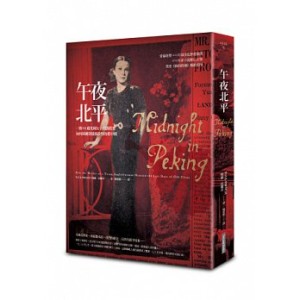
Posted: October 31st, 2013 | No Comments »
London seems agog at all things Chinese arty at the moment – more traditional stuff right now thanks to the V&A’s exhibition Masterpieces of Chinese Painting 700-1900 (I’ll get along when the initial crowds die down I think). However, do check the very cool swirling dragons on the exhibitions site!! As well as the V&A Super Show we’ve got the release of Phaidon’s new Chinese Art Book – 5,000 years in 300 works.
So, as is customary here at China Rhyming, a far more obscure anecdote on Chinese art. This one concerns the French painter André Lhote. Lhote was born in 1885 in Bordeaux and held his first solo exhibition in 1910 in Paris. Lhote’s style was initially influenced by Gauguin and Cezanne, then later transitioned to Cubism. He was a major influence on one major Chinese artist as a young man who studied with him, Wu Guan Zhong. Wu, in his memoirs (he sadly died in 2010), clearly and fondly remembers details of the time he spent at Lhote’s Studio and was impressed by Lhote’s use of colour paper in his teaching and painting. Wu wrote in his memoir “Lhote was a magician of colour. Learning the use of colour was a very important part of studying at his studio. It wasn’t just the use of colour; it was giving colour structure. I also learned composition, especially landscape composition.â€
So first two examples of Lhote’s work and then two from Wu Guan Zhong…..
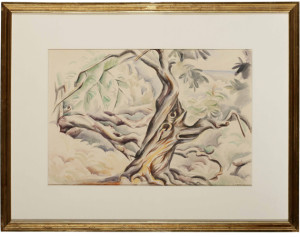
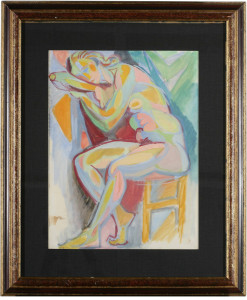
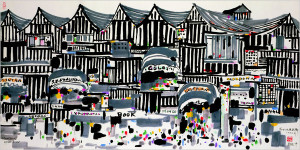
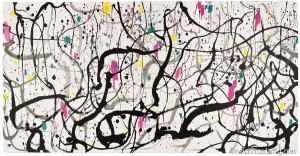
Posted: October 30th, 2013 | No Comments »
It is gratifying to see Asia’s history being increasingly told as part of major global histories – it hasn’t always been the way of course. Among the best of the new BIG history books that does include a wealth of good detail about Asia is Ian Buruma’s Year Zero: A History of 1945, a great read, though perhaps not the most uplifting account of human treatment of humans! None of us come out of it particularly well. Buruma is, of course, a great writer on China (think The China Lover), Japan (numerous books) and South East Asia and a scholar of the region so his inclusion and detail on China and Japan as well as coverage of the immediate post-war situation in the Dutch East Indies, Indo-China and Malaya, are all interesting.
And I do particularly love Buruma’s description of Tsingtao (Qingdao) in 1945 as, “a place of seedy carpet baggers, gangsters, spies with shifting loyalties and Japanese who still behaved like a master race.” Sounds like perfect fodder for a book to me!!
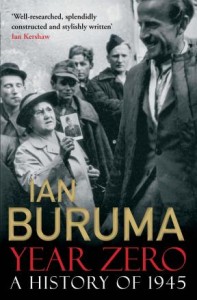
e, mostly its indigenous population. During this long stay, he built an important collection of cultural items from the Taiwanese aborigines (close to 300 items) that is now on loan to the Shisanhang Museum of Archeology, in Xin Taipei, Taiwan, and is regularly exhibited in the island. The collection can be seen on this website: www.formosatribal.com











